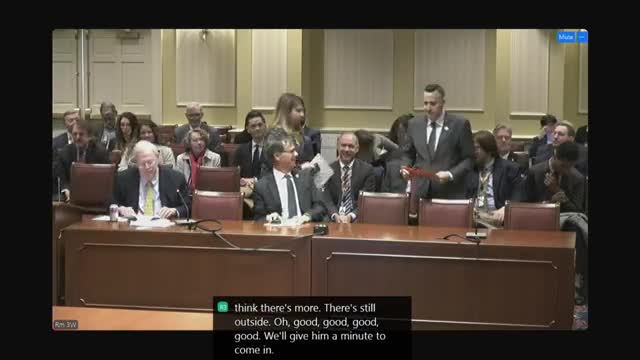Bill would let counties raise top piggyback income tax rate for high earners
January 15, 2025 | Budget and Taxation Committee, SENATE, SENATE, Committees, Legislative, Maryland
This article was created by AI summarizing key points discussed. AI makes mistakes, so for full details and context, please refer to the video of the full meeting. Please report any errors so we can fix them. Report an error »

A bill under consideration in the Senate Budget and Taxation Committee would let counties increase the top rate on the local piggyback income tax from 2.3% to 2.7% for taxpayers with incomes above $250,000, according to testimony to the committee.
Supporters told the committee the change would give counties another revenue option beyond property tax to pay for local obligations including school construction and transportation improvements.
The proposal would allow counties that are not already at the state maximum to adopt a higher top bracket and use the added revenue locally. Testimony described the bill as an “enabling” measure that would let jurisdictions discuss local options and design progressive brackets tailored to community priorities. Kevin Kennelly, testifying for the Maryland Association of Counties, said two-thirds of Maryland residents live in counties already at the current maximum and have few local options other than the property tax.
County representatives said the earlier local option to create staggered brackets produced modest revenue and helped low-income residents while increasing progressivity for high earners. A county executive told the committee the county raised its top rate under earlier enabling legislation and lowered the rate for the first $50,000 of income to reduce the burden on lower earners.
Supporters framed the bill as one way to offset potential federal tax-policy changes that could reduce state and local resources, describing the change as a local tool to capture some benefits that higher-income taxpayers would receive at the federal level and direct them to local services.
No formal vote on the measure was recorded in the hearing record. The bill’s proponents said they would work with bill sponsors on bracket design and asked the committee for a favorable report so counties would have the option to consider progressivity at the local level.
The hearing included representatives of local and education groups; questions centered on design choices, equity and how counties would use any additional revenue.
Supporters told the committee the change would give counties another revenue option beyond property tax to pay for local obligations including school construction and transportation improvements.
The proposal would allow counties that are not already at the state maximum to adopt a higher top bracket and use the added revenue locally. Testimony described the bill as an “enabling” measure that would let jurisdictions discuss local options and design progressive brackets tailored to community priorities. Kevin Kennelly, testifying for the Maryland Association of Counties, said two-thirds of Maryland residents live in counties already at the current maximum and have few local options other than the property tax.
County representatives said the earlier local option to create staggered brackets produced modest revenue and helped low-income residents while increasing progressivity for high earners. A county executive told the committee the county raised its top rate under earlier enabling legislation and lowered the rate for the first $50,000 of income to reduce the burden on lower earners.
Supporters framed the bill as one way to offset potential federal tax-policy changes that could reduce state and local resources, describing the change as a local tool to capture some benefits that higher-income taxpayers would receive at the federal level and direct them to local services.
No formal vote on the measure was recorded in the hearing record. The bill’s proponents said they would work with bill sponsors on bracket design and asked the committee for a favorable report so counties would have the option to consider progressivity at the local level.
The hearing included representatives of local and education groups; questions centered on design choices, equity and how counties would use any additional revenue.
View full meeting
This article is based on a recent meeting—watch the full video and explore the complete transcript for deeper insights into the discussion.
View full meeting
